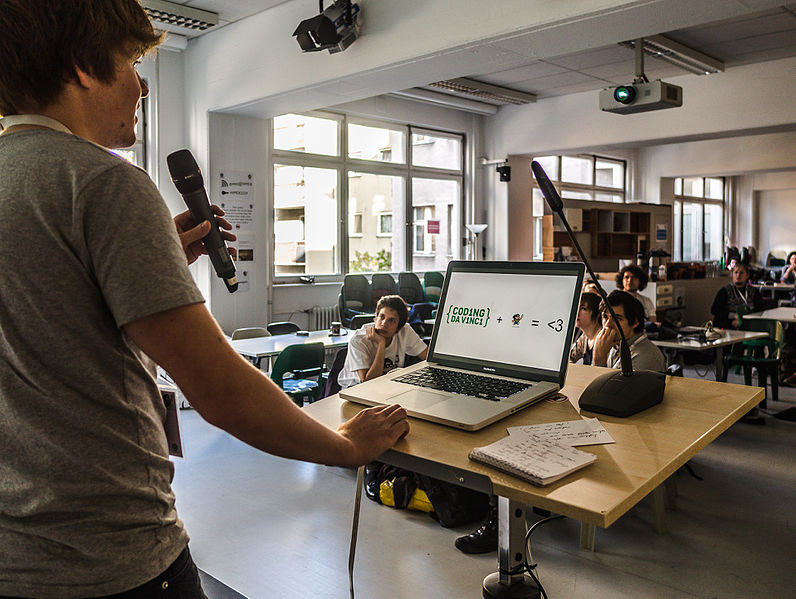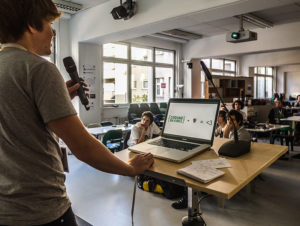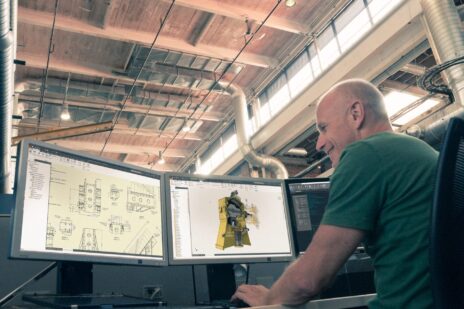

Many more technically-minded people are not naturally adept at speaking in front of people or communication in general. Refining our communication skills as engineers takes work, so let’s take a look at some practical ways we can optimize our performance.
Polish off Your Introduction
If you can get a conversation started off well, then the rest of the conversation is likely to go smoothly. This applies both to casual talks with your coworkers to presentations in front of potential clients.
Let’s focus on the latter first. For presentations, try practicing a solid introduction to who you are and what you do. Give the task some forethought and try out different types of introductions. If you practice anything, make sure your introduction comes off smooth and confident, but not rehearsed. We can call this introduction optimization rather than public speaking practice. I don’t know about you, but my engineering brain feels a lot better about something when it includes the word optimization rather than the dreaded public speaking.
Joking aside, practicing your introduction helps you two-fold. When it goes smoothly, you as the presenter feel more comfortable with the audience. When you present yourself as a skilled individual in a confident manner, it actually makes you more confident and seems more skilled in the presentation. The second aspect is that a good introduction establishes respect from the audience to yourself. An audience that feels like they can relate to a presenter is much more likely to respond well to a presentation – or laugh at your terrible jokes.
For more personal conversations, the tactics are a little different. You probably don’t want to start off a water cooler chat with your co-worker with the phrase, “Hi, I’m Bill and I’m an expert engineer.” That would be awkward, and the goal of this blog post is to make you less awkward. When engaging in a more free-flowing conversation, it can be helpful to remind yourself to slow down, run some quality control on your words before they leave the factory. If you can seamlessly flow into a conversation, the rest of the discussion is going to go a lot better.
Analyze Your Audience Before Speaking
Tagging along to the last aspect of the previous point, a key to public speaking is to make sure your mouth doesn’t resemble the broken water main you just repaired last week. Put a flow valve on your mouth and limit what you’re saying to only the effective and well-communicated things.
As engineers, we have a lot of knowledge up in our heads. For most of the world, this knowledge means absolutely nothing. When going into meetings with clients or presenting to others, make sure you adapt your speaking to the audience you are presenting to.
This aspect of improving your speaking as an engineer is going to require a little forethought as well. Before going into any presentation, make sure you know who you are presenting to. Walkthrough a process of determining who will be in the room and what you need to say to engage that individual. If you are presenting to a room mixed with marketing staff and other engineers, you will need to include aspects that are both highly technical and the well worded, without making one group feel less smart or too smart. It’s almost like… presenting is an engineering problem.
Observe and Adapt
One of the worst things you can do is get up in front of a group of people and just start reading your presentation and shrugging off any response you get from your audience. Make sure you keep an eye on your audience, watch their faces.
Now, personally, I’m not the best at reading body language. I would bet that just a few of my fellow engineers draw the same conclusions about themselves. With that said, make eye contact.
For even the worst person at reading body language, if you make good eye contact with someone, you will be able to get a sense of how you are presenting. This doesn’t mean stare at Jeff and only Jeff in the front row. Look around and be observant.
Observe your audience and adapt your wording, your demeanor, your presentation, your conversation. You would never design a manufacturing plant once and just let it run without a watchful eye. Observe your audience and make changes to the presentation that you are giving.
Get Feedback
This last point requires us to be proactive and possibly notch down our engineering pride a little bit. If you are giving a public presentation or one where you feel comfortable with the audience, take some time to pass out feedback cards. I wouldn’t pass out feedback cards if you are, say, giving a bid presentation to prospective clients. However, getting feedback in environments that condone it is generally a good idea.
Take the tips on the surface and take them humbly. Understand that if you go this route, you do open yourself up to harsh criticism – you need to be prepared to handle that. However, if you actually take the tips and improve yourself, you can see a drastic improvement in a matter of days.
If going the anonymous feedback card route is a little too scary for you, then try talking to coworkers or friends who saw you present. Friends will generally be a little nicer with their words.
The key to all of these tips is forethought and effort. Put in work to improve your communication skills, and it will become the most powerful skill you have.
Image: [1]
Written by:
Trevor English
Marketing Manager Trevor is an experienced marketing and content creation professional who has spent his entire career helping engineering technology companies reach their customers through digital media. He currently works for Autodesk on the Digital Acquisition Team where he’s responsible for social demand generation for the AutoCAD and Design and Manufacturing families. You can also see his written engineering marketing content on InterestingEngineering.com, Curiosity.com, and other sites across the web.
Trevor is an experienced marketing and content creation professional who has spent his entire career helping engineering technology companies reach their customers through digital media. He currently works for Autodesk on the Digital Acquisition Team where he’s responsible for social demand generation for the AutoCAD and Design and Manufacturing families. You can also see his written engineering marketing content on InterestingEngineering.com, Curiosity.com, and other sites across the web.


